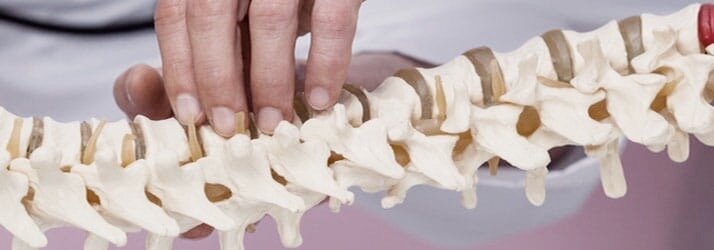WHAT ARE BULGING DISCS?
Learning about the different parts of the spine, and their functionality is the key in understanding how to maintain your best spinal health. In the office we talk a lot about the importance of properly tending to your spinal discs or treating bulging discs. Our spines consist of vertebrae that have discs in between them to act almost like a shock absorber, if you will. These discs prevent damage to spinal bone and tissue. Additionally, they assist in making movement easier because they have a hard casting and a juicy center. Considering these factors, it makes a whole lot of sense that spinal disc health almost completely determines how effective our mobility will be.
So why is a bulging disc so detrimental to your spinal health? Having bulging discs, or a “disc slip” from its normal positioning causes the spine to become compressed and results in the outward swelling of fluid throughout the weakest point of the disc. In this occurrence it is common for the disc to balloon in between space of the vertebrae. The areas in closest proximity to the slipped disc may become swollen as well, but even more significant is that the nerves in that area can get trapped, pinched, or become heavily irritated causing anywhere from mild discomfort to downright debilitating pain. Some of those symptoms of a bulging disc may include shooting pain when attempting to make movement, tingling, or even numbness. The longer this condition persists and or progresses, the worse the symptoms will become causing the disc to protrude. Basically, an untreated slipped disc results in a bulging disc.
Some of the main causes of a slipped disc are twisting, lifting, jumping - whether work or activity related. Time is another factor, the older in age you become it is natural for there to be some degeneration in bone health. Poor posture can also cause a disc slip because you are constantly moving your body in a way that is incorrect. High impact can lead to a slipped and bulged disc, think of things like high intensity sports, or high impact athletic training. (i.e., crossfit, football, etc) Sleep is another culprit, we talk so much about this in the office! If you sleep in a way that is uncomfortable for the spine it can irritate the injury further but accentuating the C shape in the spine, that can trap spinal nerves. Stress, dehydration, inactivity and genetics also contribute to slipped and bulging discs.
You might be wondering how we treat it, then! Obviously prevention is the number one way. A change in body positioning and behaviors like sleeping, sitting, gentle exercising and general posture will reduce bulging disc symptoms. To improve your posture, getting regular adjustments is of ultimate importance. Using the wobble chair in our office is specifically for keeping vertebrae discs super juicy. We also offer a wobble disc to purchase for at home that you can purchase here.
Like with all health, prevention is vital so start taking care of your discs now before injury occurs. Understand too, that the power the made the body heals body so resiliency and healing is always available to us with proper care and consistency.
